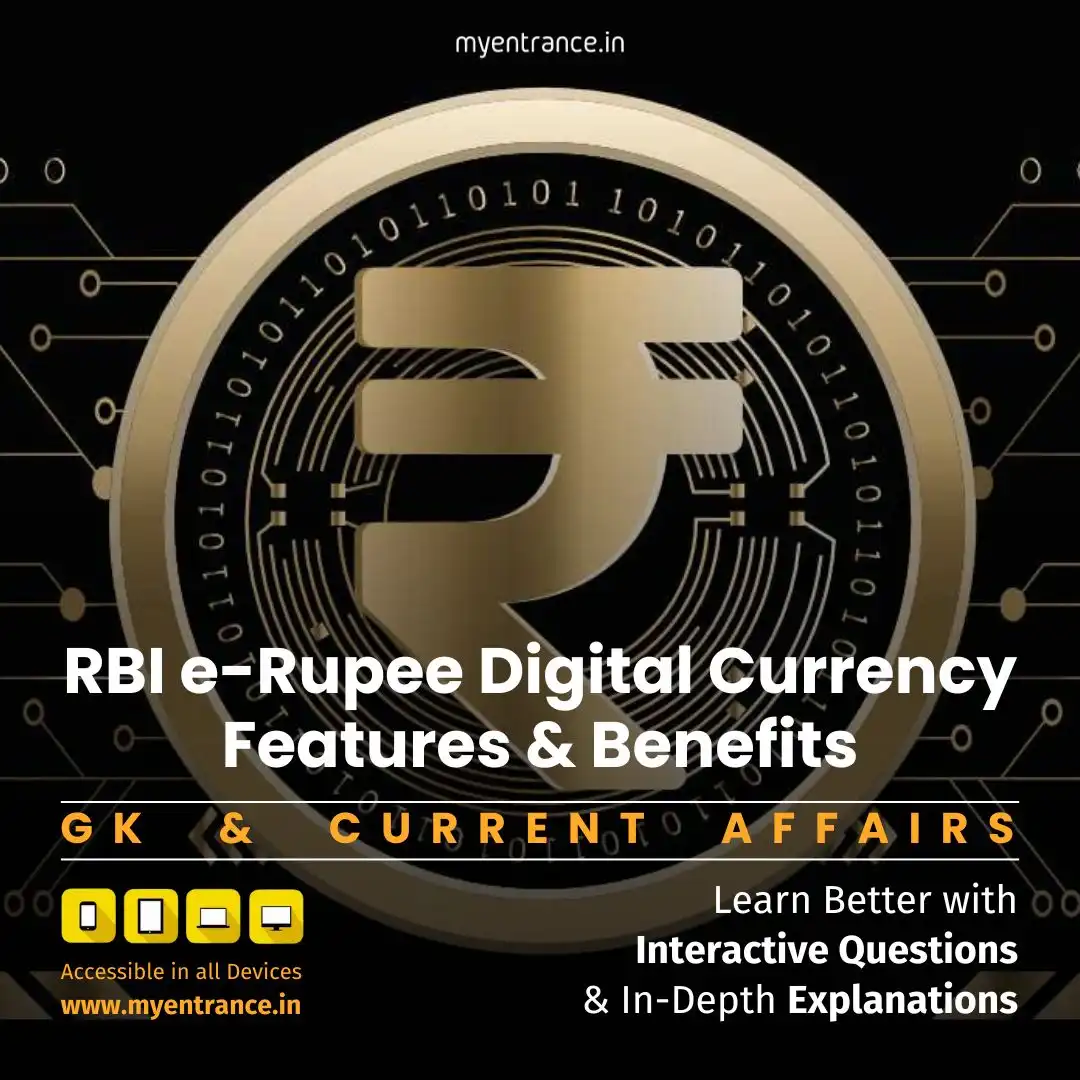Select Language
India’s Digital Currency: Features, Benefits, and Tax Implications for Exam Prep
The RBI e-Rupee, India’s Central Bank Digital Currency (CBDC), is a revolutionary step in digital finance. For competitive exam aspirants (SSC, PSC, banking, etc.), understanding its features, tax implications, and usage is crucial for current affairs and GK sections.

Why the e-Rupee Matters for Exams
Current Affairs: A trending topic in government exams (UPSC, SSC, PSC).
GK & Banking Awareness: Essential for banking exams (IBPS, RBI Grade B).
Economic Developments: Helps in understanding India’s digital economy.
Taxation & Finance: Relevant for exams with finance-related sections.
Understanding the RBI e-Rupee
What Is the e-Rupee?
The e-Rupee (CBDC) is a digital form of sovereign currency issued by the RBI. Unlike UPI or bank balances, it is a digital token that functions like cash but in electronic form.
Key Features
Legal Tender: Just like physical cash, it is recognized by law.
No Interest Earned: Unlike bank deposits, it doesn’t generate interest.
Anonymity: Transactions offer privacy similar to cash.
Distributed via Banks: Accessed through digital wallets from participating banks.
Growth of e-Rupee
2022 (Pilot Launch): Limited to select banks and users.
2024: Circulation reached ₹234 crore.
2025: Crossed ₹1,000 crore, with 60 lakh users and 17 major banks onboard.
Tax Implications of the e-Rupee
No Direct Tax on e-Rupee
Not classified as a capital asset or virtual digital asset (like crypto).
No GST or capital gains tax on transactions.
Potential Tax Pitfalls
High-value transactions in e-Rupee may be treated like cash transactions under the Income Tax Act.
Penalties may apply if used for restricted transactions (e.g., large cash deals).
How to Use the e-Rupee
Download a Digital Wallet from a participating bank.
Load e-Rupee into the wallet (similar to recharging a prepaid card).
Make Payments to merchants or individuals via QR codes or digital transfers.
Sample Questions & Answers for Competitive Exams
Q1. What is the RBI e-Rupee?
Ans: It is India’s Central Bank Digital Currency (CBDC), a digital form of legal tender issued by the RBI.
Q2. Does the e-Rupee earn interest?
Ans: No, it does not generate interest like a savings account.
Q3. By 2025, what was the approximate circulation value of the e-Rupee?
Ans: Over ₹1,000 crore.
Q4. How is the e-Rupee different from UPI?
Ans: UPI is a payment system, while e-Rupee is digital cash issued by the RBI.
Q5. Can e-Rupee transactions attract tax penalties?
Ans: Yes, if used for high-value transactions, they may be treated like cash deals under tax laws.
Most Predicted Questions
Comprehensive study materials, Expert-guided tips & tricks, Mock tests and instant results.
Start your SSC, NIFT, NID, FDDI, PSC journey today with MyEntrance, your ultimate online coaching platform.















